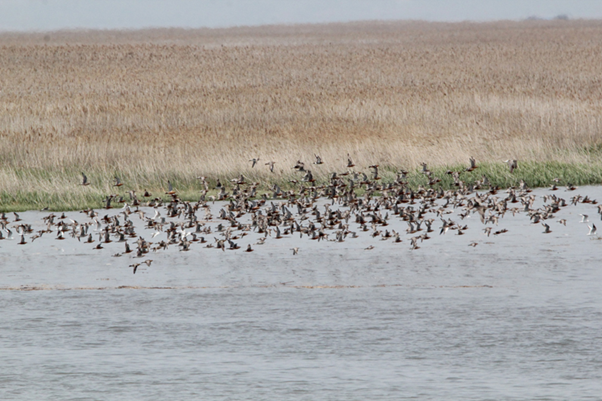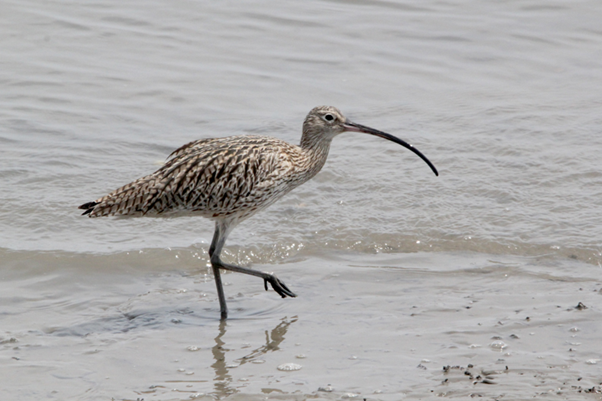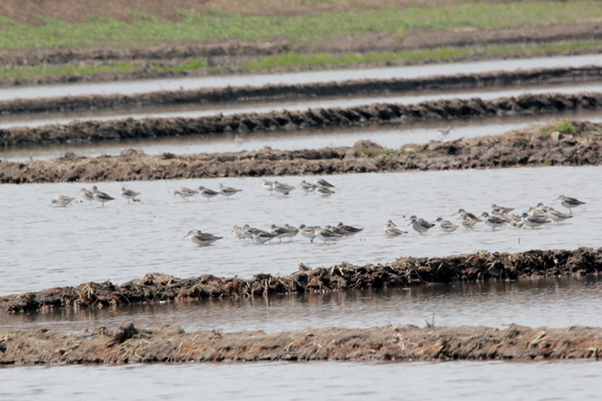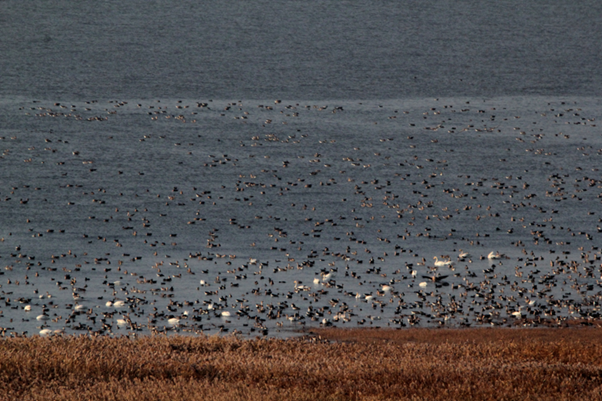The following article was provided by Hanns Seidel Foundation Korea and written by Dr. Ri Chung Song, Biodiversity Institute under the State Academy of Sciences, Democratic People’s Republic of Korea (DPRK). Minor revisions have been applied to the original article to improve clarity and align it with the guidelines established by the EAAFP.
 © Dr. Ri Chung Song, Biodiversity Institute under the State Academy of Sciences, DPRK
© Dr. Ri Chung Song, Biodiversity Institute under the State Academy of Sciences, DPRK
The Democratic People’s Republic of Korea, located in the centre of the East Asian–Australasian Flyway, has vast areas of wetlands, including coasts, lakes, swamps, rivers and paddy fields. So, it plays a vital role in protecting waterbirds and other species that inhabit the wetlands.
Every year, about 200 species of waterbirds fly into the local wetlands in different seasons, amounting to hundreds of thousands. Among them are over 20 globally endangered species, including the Spoon-billed Sandpiper (CR), Black-faced Spoonbill (EN), Oriental Stork (EN), Far Eastern Curlew (EN), Great Knot (EN), Swan Goose (EN), Red-crowned Crane (VU), White-naped Crane (VU), and Hooded Crane (VU). In particular, the wetlands on the west coast of Korea are globally instrumental in protecting the Far Eastern Curlew and the Swan Goose.
 © Dr. Ri Chung Song, Biodiversity Institute under the State Academy of Sciences, DPRK
© Dr. Ri Chung Song, Biodiversity Institute under the State Academy of Sciences, DPRK
Therefore, the DPRK has designated more than 20 migratory and waterbird reserves and conducted nationwide activities to protect and manage them. In line with the global effort to maintain biodiversity, it has included the Mundok and Rason migratory bird reserves on the List of Wetlands of International Importance (Ramsar sites) and designated the Mundok Wetland Reserve (EAAF044) and Kumya Wetland Reserve (EAAF045) as East Asian–Australasian Flyway Network Sites to promote protection and awareness at the international levels.

 © Dr. Ri Chung Song, Biodiversity Institute under the State Academy of Sciences, DPRK
© Dr. Ri Chung Song, Biodiversity Institute under the State Academy of Sciences, DPRK
Based on the recent confirmation of the distribution of endangered species in all migratory bird reserves, the country has taken measures to expand the reserves and designate new reserves after conducting field surveys of major wetland biodiversity areas and evaluating their values for protection.
The Biodiversity Institute under the State Academy of Sciences now conducts regular surveys of waterbirds during wintering and migration in spring and autumn in major wetlands and migratory bird reserves on the east and west coasts and inland to intensify research on wetland protection and prediction of their changes.
Ri Chung Song, PhD
Associate Professor, Director
Biodiversity Institute under the State Academy of Sciences
습지보호활동 강화
우리 나라는 동아시아-오세안주철새이동경로의 중심에 위치하고있으면서 바다연안과 호소(호수와 늪), 강하천, 논벌 등 다양한 습지들이 넓은 면적에 형성되여있는것으로 하여 물새를 비롯한 습지에 분포되여 서식하는 생물종들의 보호에서 매우 중요한 역할을 수행하고있다.
우리 나라의 습지들에는 해마다 약 200종에 달하는 물새들이 계절별로 날아들어 서식하는데 그 마리수는 수십만마리에 달한다. 그리고 주걱부리도요, 저어새, 황새, 알락꼬리마도요, 붉은어깨도요, 물개리, 흰두루미, 재두루미, 갯두루미 등 20종이상에 달하는 전지구적인 위협종들이 서식하고있으며 특히 조선서해연안의 습지들은 위협종들인 알락꼬리마도요(EN)와 물개리(VU)의 보호에 있어서 지구상에서 매우 관건적인 역할을 수행한다.
이로부터 우리 나라에서는 현재까지 20여개의 철새(습지)보호구들과 바다새보호구들을 설정하고 국가적인 보호관리사업을 진행하고있으며 전지구적인 생물다양성보호에 보조를 맞추어 문덕철새보호구와 라선철새보호구를 람사르대상지(국제적으로 중요한 습지)로, 문덕철새보호구와 금야철새보호구를 동아시아-오세안주철새이동경로망대상지로 등록하고 국제적수준에서 보호사업과 소개선전사업을 강화해나가고있다.
그리고 최근년간 전반적인 철새보호구들에서 보호대상들의 분포상태를 확정한데 기초하여 보호구면적을 늘여나가고있으며 10여개의 주요습지생물다양성중점지역들에 대한 현지조사와 보호가치평가를 진행하고 새로운 보호구로 설정해주기 위한 사업을 추진하고있다.
국가과학원 생물다양성연구소에서는 동서해연안과 내륙의 주요습지들과 철새(습지)보호구들에서 월동시기와 봄가을철이행시기 물새들에 대한 정상적인 조사를 통하여 습지들에 대한 보호상태와 그 변화예측을 위한 과학연구사업을 심화시켜나가고있다.
국가과학원 생물다양성연구소 소장 박사 부교수 리충성
2024-02-01




